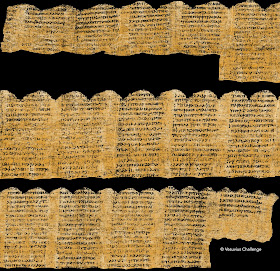This is a really fascinating story, and a good example of the way that AI and be used as a tool for the traditional humanities:
Machine learning tools are being used to turn CAT scans of scrolls entombed in volcanic mudflows in Herculaneum in 79AD into readable images which papyrus experts are then turning into text and philologists are translating.
This first victory consisted of successfully producing readable images of just a dozen columns of text -- a little over 2000 characters -- from one scroll. But it's amazing progress from where things stood a year ago, and the prize for this year will be for producing code that can turn the CAT scan raw data into readable versions of 90% of the first four full scrolls.
If they're able to read all of the 800 intact scrolls they have now, it would be a significant increase in the total available text from the ancient world. And some archeologists believe they haven't yet found the main library of scrolls in the villa from which these come.
My Greek would need a lot of practice before I'd be able to read this previously unavailable text -- a discourse on pleasure by an Epicurean philosopher, Philodemus. Indeed, all the fragments previously read from the scrolls found in this room of the villa are works by Philodemus, leading some researchers to believe that he may have been in residence at the Villa and this may have been his working library (while the larger library in the villa which they believe is still yet to be found might contain a wider range of works.)
But what's fascinatingly modern about this whole thing is that the really cutting edge work doesn't require Greek, it requires Python programming. Teams of interested programmers wrote code to detect the imprint of ink on papyrus from the CAT scan images, and to virtually assemble and unwrap the CAT scan images (which are narrow x-ray image slices through the whole scroll) into images of the sheets of papyrus itself. The mixture of very ancient and very modern here is fascinating. And since the entire project is based on open source principles, if you are a cutting edge Python programmer with an interest in the Ancient world, you can to go the site and click through to GitHub where all the code for the various teams is posted, allowing teams to study each others work as they work on the next round of imaging.

No comments:
Post a Comment